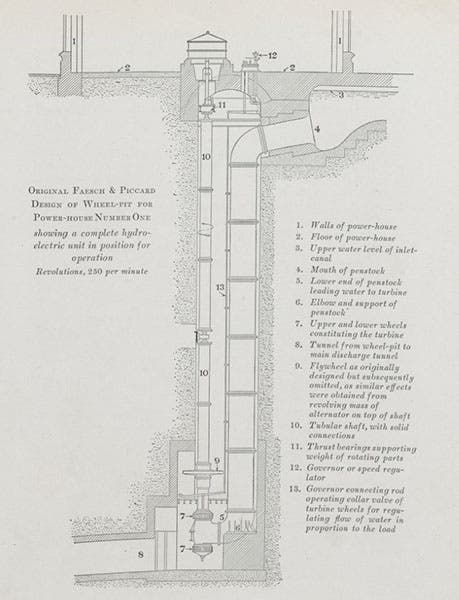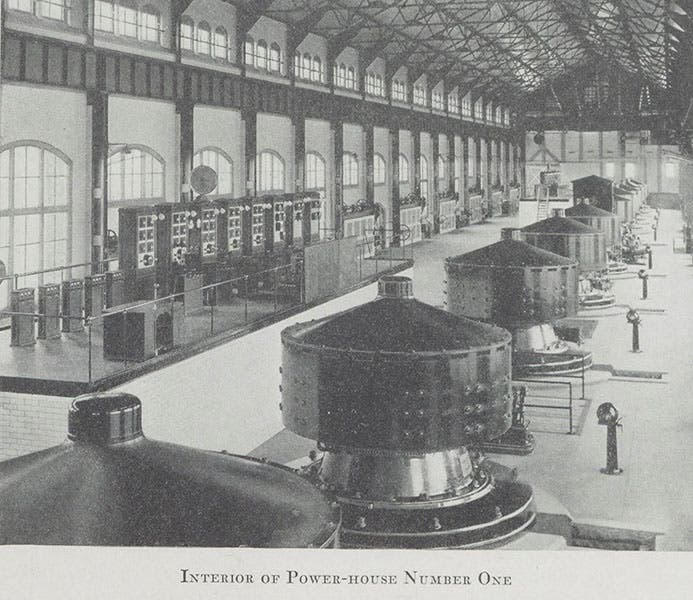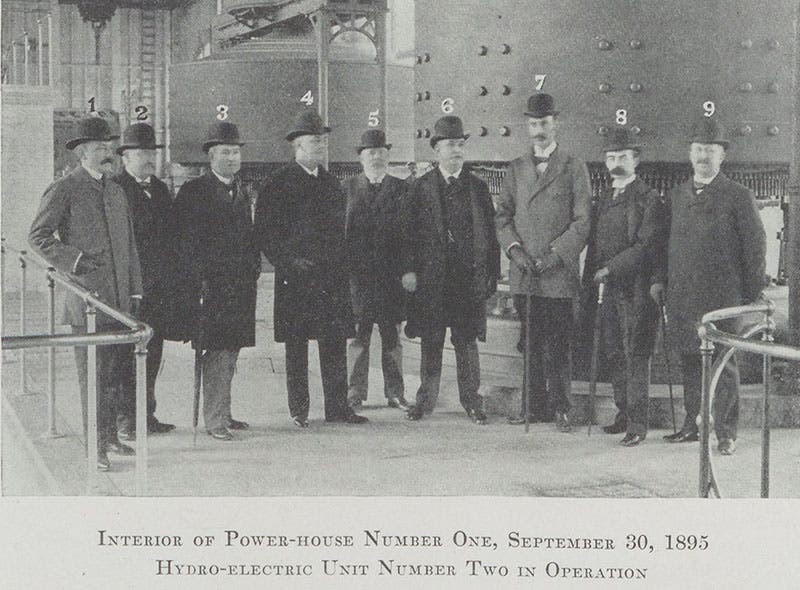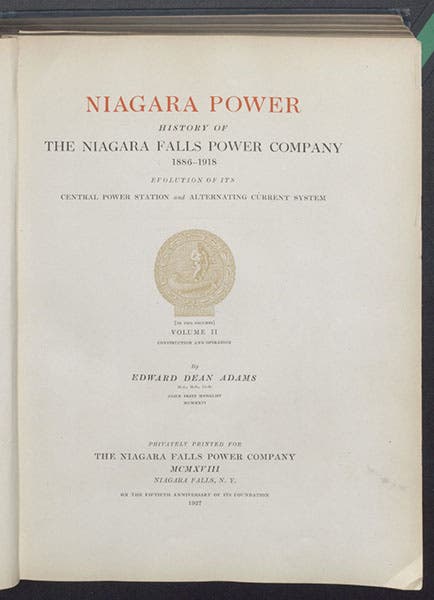Scientist of the Day - Edward Dean Adams
Edward Dean Adams, an American banker and businessman, was born Apr. 9, 1846. In 1890, Adams formed and became president of a company called the Cataract Construction Company, the purpose of which was to build a plant to generate electric power from Niagara Falls. At the time a fierce dispute was raging as to whether American's budding power networks should use direct current (as proposed by Thomas Edison and General Electric) or alternating current (advocated by Nikolai Tesla and George Westinghouse). In 1893, Adams’ company opted for alternating current and engaged Westinghouse to provide the generators (usually called alternators when used to generate alternating current) and transformers. Although this was a massive construction effort, involving the building of an extensive intake and exhaust tunnel network to divert water from the American Falls, the power plant was up and running by August of 1895.
The first powerhouse had ten alternators, the turbines for which were a hundred feet down in the ground, to take advantage of the water drop, powering the alternators on the surface by long shafts. We see here a photograph of the digging of one of the wheel-pits, as they were called (second image, above). Each of the turbines had to be accessible for maintenance, which must have been tricky. We show as well a diagram of a cross-section of one of the turbine complexes (third image, just below), and a photograph that shows the ten 5,000 horsepower alternators in the power house, a placid view that belies all the hydrodynamic turmoil deep in the ground (fourth image, below).
A little over thirty years later, Adams published a sumptuous two-volume set recording the building of the power network station and power network at Niagara Falls; the book was called Niagara Power (1927; fifth image below). All of our images here were taken from this book. The frontispiece (first image) shows an aerial view of both falls – the American falls above, the Canadian below – with Goat Island at the center, and the city of Niagara (Falls) at the top. The 1895 power plant was built at the upper right, diverting water from the Niagara River; a later and larger plant can be seen at upper left, below the falls.
There is no large photo of Adams in the book (although there are full-page portraits of Westinghouse and Edison). But there several photographs of the company directors standing about looking important; we show one taken in powerhouse number 1, shortly after the alternators went online in the fall of 1895 (sixth image, just above). Adams is the shorter gentleman, second from the right. It is amazing how in 1895, as in all times, upper-level businessmen and bankers dress exactly alike.
Our copy of Adams’ Niagara Power came to us from the Engineering Societies Library in New York City, to which Adams presented it, with a handwritten inscription and a quotation from Francis Bacon. We have one other book that Adams gave the Societies Library, quite a different kind of book – a copy of Pomponius Mela’s De orbis situ, printed in 1522 (seventh image, just above). It contains a map of the world that is in remarkably fine condition, executed by Peter Apian in 1520. It is the third oldest world map in our Library, and the first to show the new continent of America. We reproduced the titlepage and the world map in an earlier post on Mela, without mentioning Adams. So we did not show at that time the Adams bookplate pasted in the front, which we reproduce here. Several Niagara Falls elements can be detected within the intricate emblematic design (eighth and last image, below).
The only remaining structure from the original Edward Dean Adams Power Plant (as it was named in 1927) is the Transformer House, which was made a National Historic Landmark in 1983. However, the roof is falling in and the building stands forbidden within a chain-link fence, which makes it a sorry memorial for the first large-scale alternating-current power plant in the country. Dr. William B. Ashworth, Jr., Consultant for the History of Science, Linda Hall Library and Associate Professor emeritus, Department of History, University of Missouri-Kansas City. Comments or corrections are welcome; please direct to ashworthw@umkc.edu.













